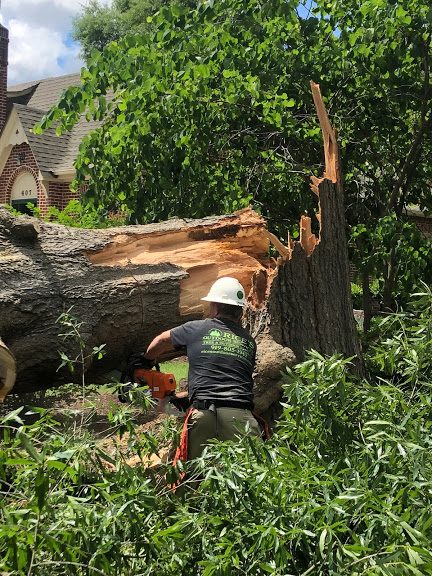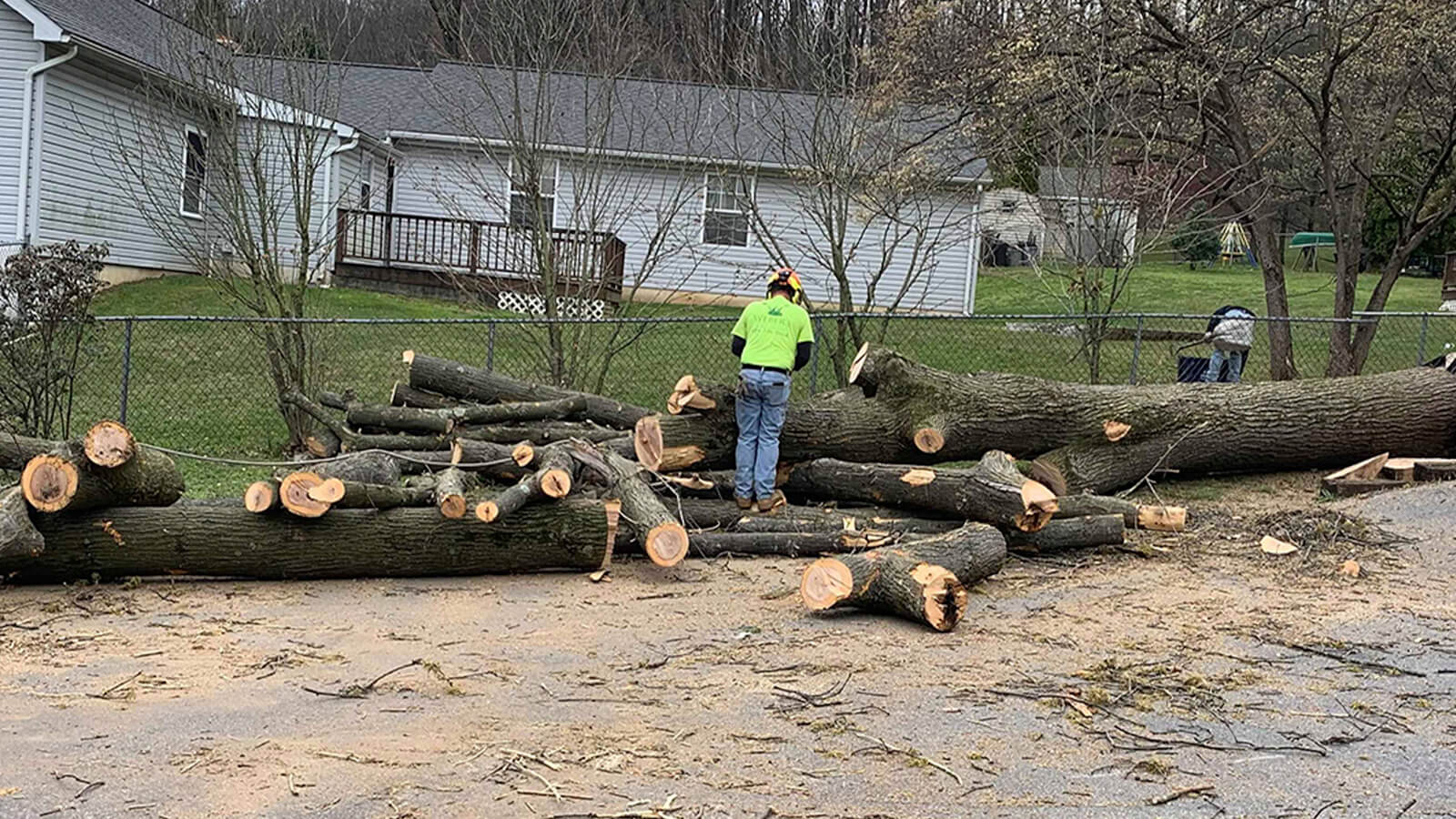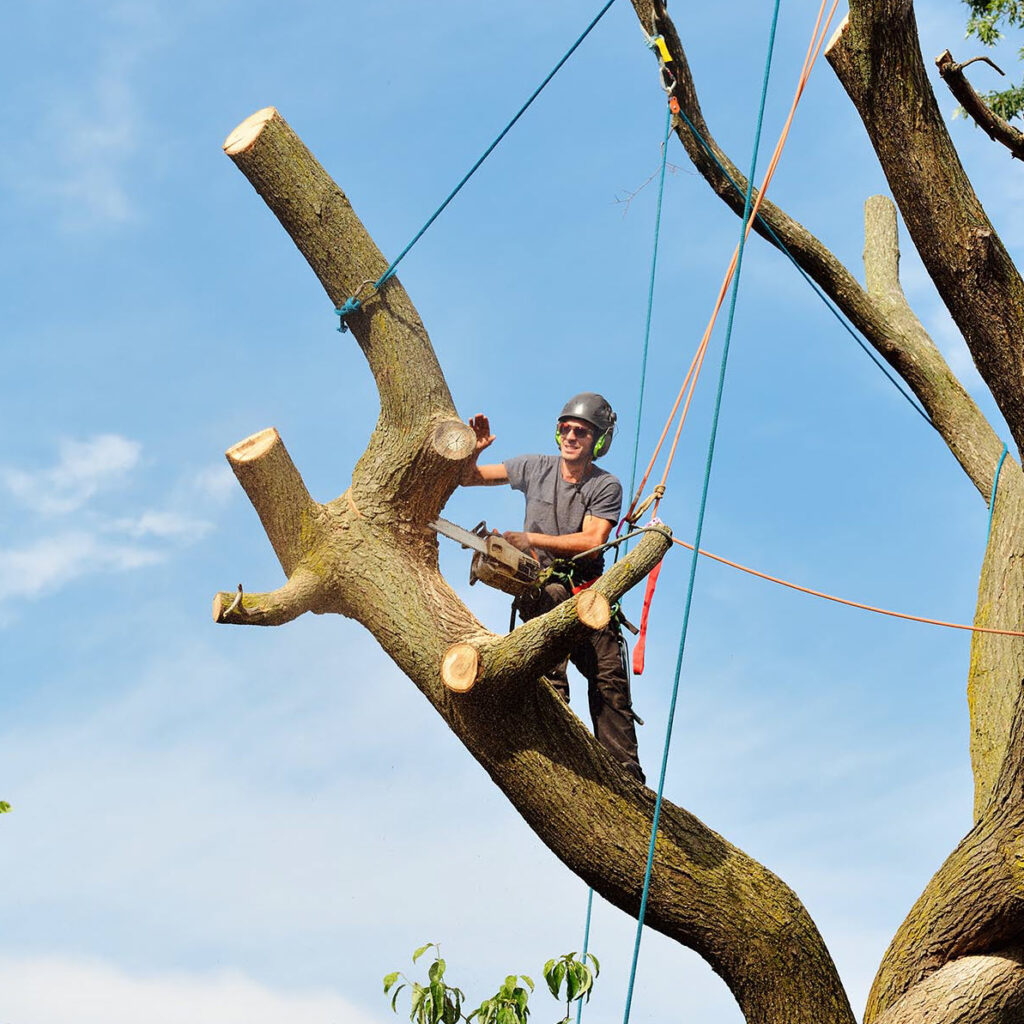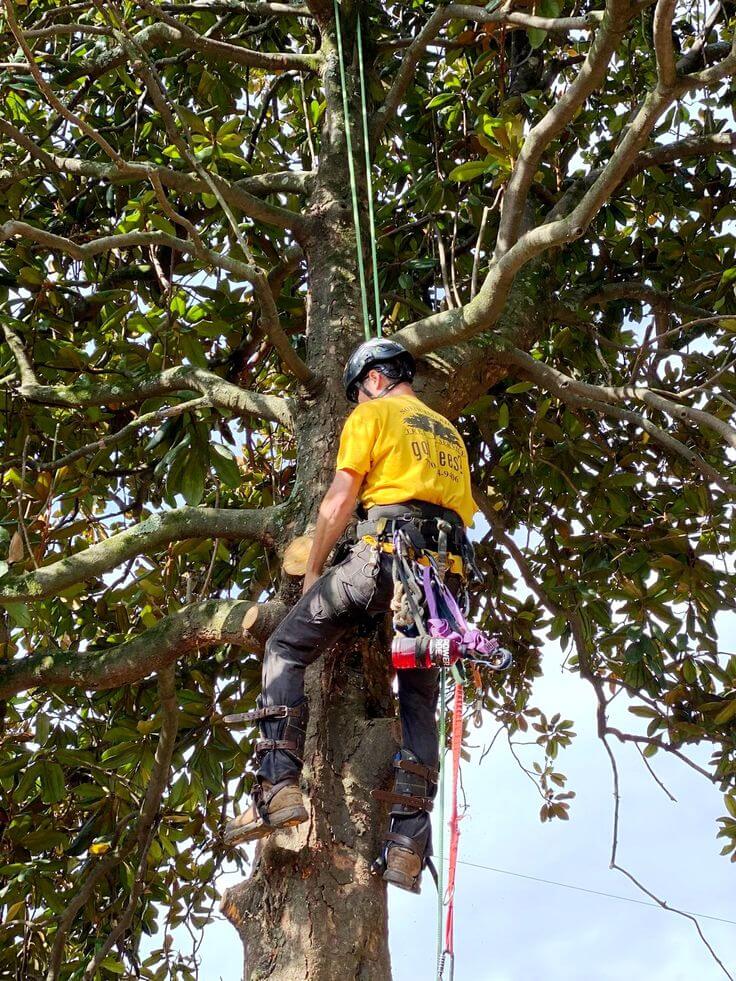Introduction
If you’re searching for “large tree removal near me,” you’re likely facing the daunting task of dealing with a massive tree on your property. Whether it’s due to safety concerns, disease, or simply the tree outgrowing its space, large tree removal is no small feat. In this article, we’ll walk you through everything you need to know about large tree removal, including when it’s necessary, how it’s done, and how to choose the right professionals for the job.
Indicators That It May Be Time to Remove a Large Tree
Dead or Dying Tree
One of the most obvious signs that a tree needs to be removed is if it’s dead or dying. A dead tree can become a serious hazard, especially during storms, as it can easily fall and cause damage.

Tree Leaning Dangerously
If a tree is leaning significantly, it might be a sign that it’s unstable and at risk of falling. This is especially concerning if the tree is leaning toward a structure, road, or power lines.
Root Problems
Roots are the foundation of a tree, and if they’re damaged or decaying, the tree’s stability is compromised. Signs of root problems include visible root decay, fungus growth, or roots pushing up through the ground.
Pest Infestation
Trees infested with pests, such as termites or beetles, can suffer from extensive internal damage, making them weak and more likely to fall.
Why Hire Professionals for Large Tree Removal
Safety Concerns
Large tree removal is inherently dangerous. Professionals have the experience and training to safely remove trees without putting themselves or others at risk.
Proper Equipment
Tree removal requires specialized equipment, such as chainsaws, cranes, and wood chippers, which professionals are trained to use effectively.
Legal Considerations
In many areas, removing a tree, especially a large one, may require permits or adherence to local regulations. Professional tree removal services are familiar with these requirements and can handle the paperwork for you.
Steps Involved in Large Tree Removal
Initial Consultation and Assessment
The first step in the tree removal process is an assessment by a professional arborist. They will evaluate the tree’s condition and the surrounding area to determine the best approach for removal.
Obtaining Permits
Depending on your location, you may need a permit to remove a large tree. Your tree removal service will help you obtain the necessary permits and ensure compliance with local laws.
Preparing the Area
Before the tree is removed, the area around it needs to be secured and cleared of any obstacles. This includes moving vehicles, furniture, and anything else that could be damaged during the removal process.
Cutting Down the Tree
The tree removal process itself involves carefully cutting down the tree in sections, starting from the top. This method ensures that the tree is removed safely and in a controlled manner.
Stump Removal
After the tree has been cut down, the remaining stump can be removed using a stump grinder. Stump removal is important for aesthetic reasons and to prevent new growth or pest infestations.
Cost of Large Tree Removal
Factors Affecting the Cost
The cost of large tree removal can vary greatly depending on several factors, including the size of the tree, its location, and the complexity of the removal process.
Average Cost Breakdown
On average, large tree removal can cost anywhere from $500 to $3,000 or more. This includes labor, equipment, and disposal of the tree.
Additional Services and Costs
Additional services, such as stump grinding, wood chipping, or debris removal, may come at an extra cost. It’s important to discuss these options with your tree removal service upfront.
Selecting the Best Tree Removal Service: A Guide
Checking Credentials and Certifications
When choosing a tree removal service, it’s important to check their credentials and certifications. Look for companies that employ certified arborists and have proper licenses.
Getting Multiple Quotes
To ensure you’re getting a fair price, it’s a good idea to get quotes from several tree removal services. This enables you to evaluate prices and services, helping you find the perfect match for your needs.
Safety Precautions During Tree Removal
Protective Gear for Workers
Safety is a top priority during tree removal. Workers should wear protective gear, including helmets, gloves, and eye protection, to prevent injuries.
Securing the Area
The area around the tree should be secured and marked off to keep people and pets at a safe distance during the removal process.
Emergency Procedures
In the event of an emergency, such as a tree falling unexpectedly, having an emergency plan in place is essential. This includes having a clear communication plan and knowing how to respond quickly.

Environmental Considerations
Recycling and Reusing Tree Materials
After a tree is removed, the wood can be recycled or reused in various ways, such as for firewood, mulch, or lumber.
Replanting Options
If you’re removing a large tree, consider replanting another tree in its place. This helps maintain the ecological balance and can provide long-term benefits for your property.
Cabling and Bracing
Cabling and bracing can be used to support a tree that is structurally weak or leaning. This technique can prolong the life of the tree and prevent the need for removal.
Tree Relocation
If a tree is in the wrong location but otherwise healthy, relocating the tree might be an option. This involves carefully uprooting the tree and transplanting it to a new location.

Do I Need a Permit for Tree Removal?
In many areas, a permit is required to remove a tree, especially if it’s large or located in a protected area.
What Happens to the Wood After Removal?
After a tree is removed, the wood can be processed and used for various purposes, such as firewood, mulch, or lumber. Some tree removal services offer wood recycling options.
What Should I Do After Tree Removal?
After a tree is removed, you may want to consider stump removal, replanting a new tree

